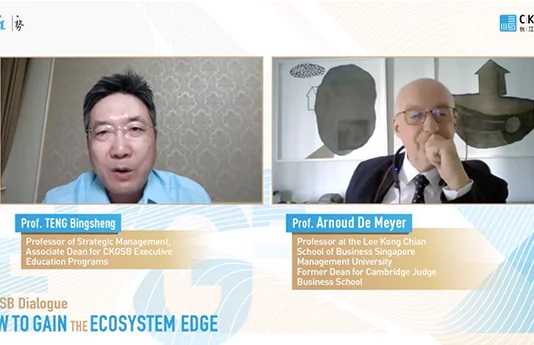Succession planning in family business is often the cause of much stress. Are there ways of making the transition smooth while mitigating the risks involved?
Family ownership may be one of the most common business structures in the world, but that doesn’t mean it’s easy to sustain. Only three in 10 successful family businesses survive to the second generation, and one in 10 make it to the third, according to most estimates.
Of course, businesses shut for many reasons. Market needs shift. Industries consolidate. Often technology eliminates the need for a service altogether before too long—think of the many mom and pop video stores that have now vanished. But one of the most common causes of failure isn’t external, experts say. Instead, it’s a bungled succession.
Whether the current patriarch tries to keep hold of the business when he is no longer up to it, can’t quite bring himself to leave, or leaves it to the wrong child, a smooth transition is the exception rather than the rule. Pierre Gauthier, a Montreal business psychologist, says that in over 30 years as an advisor to private midcap companies, he can recall only one client who said he was going to retire and walked away on schedule.
“Most owners, especially the founders, have a very, very difficult time letting go. From a rational point of view, they say they are leaving, but from an emotional point of view, they are attached. This is especially true for men. Our identities are very related to our work,” says Gauthier.
Around 10% of entrepreneurs plan their succession, according to Gauthier. “It’s not something natural—it’s like doing your will. Nobody wants to discuss their disappearance,” he says.
Navigating the many potential emotional problems of succession is not easy. There’s a reason that an awful lot of world literature, from Greek tragedies to the Bible to Shakespeare, hinges on family struggles for power. However, experts say that some of the biggest risks can be avoided with a little planning.
One of the biggest problems faced by the future retiree is envisioning how quitting the corner office will change his life. Often, he tends to have an “away from” rather than a “toward to” vision for himself, Gauthier says. He may have a vague idea that he will stay on as a kind of in-house guru— “to be like Gandalf” and may even keep his physical office—a situation that hardly ever works.
Marshall Goldsmith, a leadership coach based in Rancho Santa Fe, California, agrees with Gauthier that a successful transition begins with a successful transition for the founder.
“If founders have plans for a great new life, they can usually ‘pass the baton’ of succession with grace and dignity,” Goldsmith says. “If they do not have plans for a great new life, they often reconsider when the time comes and they are faced with the dreary prospect of playing bad golf at the country club every day, followed by eating chicken salad sandwiches with the same old men who are discussing gall bladder surgery.”
What can work better is encouraging the founder to take on an entirely new role, says Wayne Brockbank, a consultant and Clinical Professor of Business at the Ross School of Business and Director of the Center for Strategic HR Leadership at the University of Michigan. One of his clients, the CEO of a crane services company, decided to go back to work as a crane operator. Two others chose to take on different but still strategically important roles. One began working in research and development. Another took on international business development.
Even more important than the particular job choice is a clear description of the powers and duties of that next role. Often, the former boss will want to maintain an indistinct set of powers and duties, which makes life difficult for the next CEO, according to Gauthier. “If you don’t define the roles and responsibilities, the former CEO will go and shoot everything down,” he says.
Without that clarity, employees may end up confused about who is in charge. This can be especially problematic if the shift in management is not accompanied by a shift in ownership.
Clarity around the roles and responsibilities of other family members can also be helpful, succession experts say. In addition to the normal difficulties of life as a new CEO, the fledgling boss of a family company may have difficulty asserting authority over employees who are also major stockholders. “If nobody respects the distinction between being a manager and being a shareholder, then all hell breaks loose,” Gauthier says.
The other big decision of the founder is who to put in charge. “Often, they are torn between the love they have for their children and the love they have for their company,” says Gauthier.
Some founders say they want the company to stay in the family and refuse to discuss any other possibilities, Brockbank says. “At the other extreme, people say, I have an obligation to my employees and customers and my obligation to them supersedes my obligation to my family.”
Most often, CEOs are looking for a compromise that would keep the business in the family and make sure it continues to grow and run well.
CEOs tend to make the decision about their successor very intuitively, but consultants say a depersonalized, professional process typically yields better results. “The senior executive needs to work to make sure he or she does not put somebody in place because of personality fit when the kids were six years old. You need to make sure the best person is selected for the job,” Brockbank says.
Gauthier gives full psychometric inventories of the possible candidates as a way to introduce some objectivity. But it doesn’t pay to be too blunt: conclusions need to be couched in a way that is palatable to the outgoing CEO. “It requires a tremendous amount of political astuteness. You just can’t come up and say, your son will never become president, he’s just a foreman,” Gauthier says.
Helen Handfield-Jones, an Ottawa leadership consultant, says that it can be helpful to have a committee that includes people from outside the family handle the succession decision. This larger group can better assess the skills that the next CEO is likely to need most and who in the next generation of family members has the right character and experience to take on the challenge of managing the company.
Often too, such a committee can make recommendations regarding the kinds of training and experiences the candidate needs to gain before he or she is ready to take over the business. “It’s nice to identify successors, but we have to teach them to help them grow and coach them,” Gautier explains. Besides rotating through different roles within the firm, children at family companies that make a successful generational transition tend to work at other companies for a few years, he adds.
The next step is the most dangerous, Gauthier says—managing the transition. “In some cases, we set up a family council,” he says. The aim is to discuss what the new management team intends to change right away. Surprise changes, such as deciding to find a new lawyer or to leave a subcontractor with whom the company has had a long-term relationship, can drive the former CEO back to the company in a hurry if he or she is taken by surprise.




















